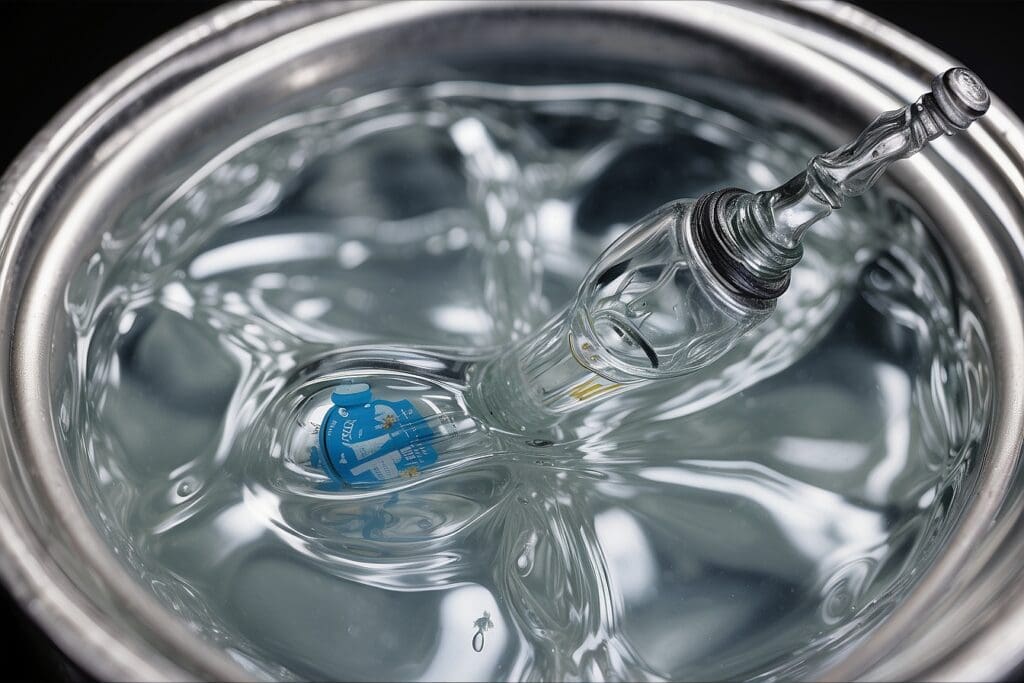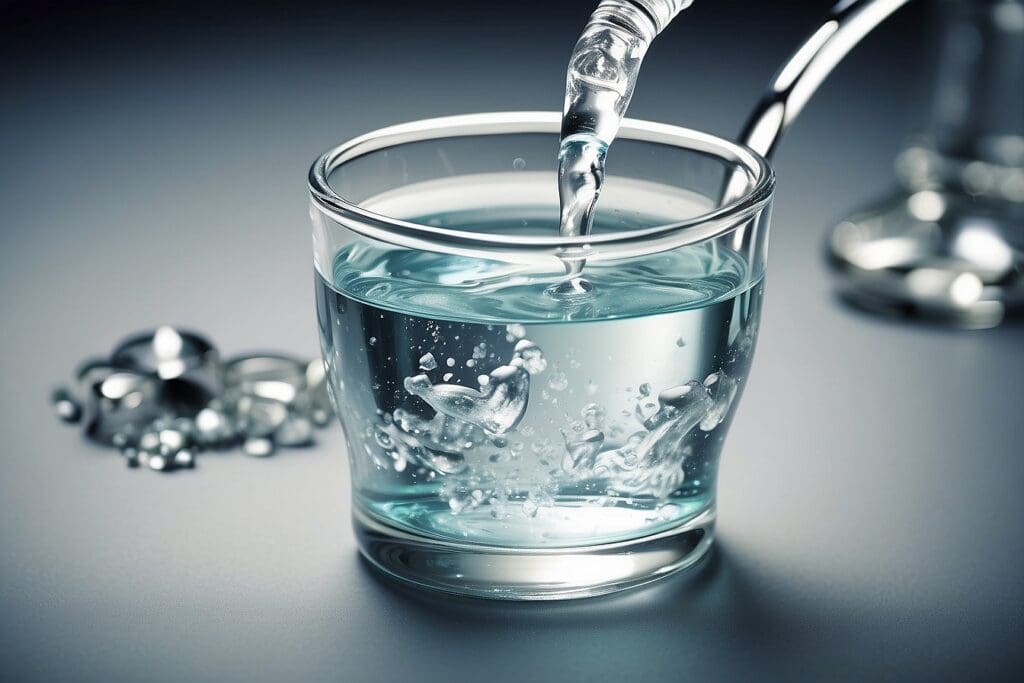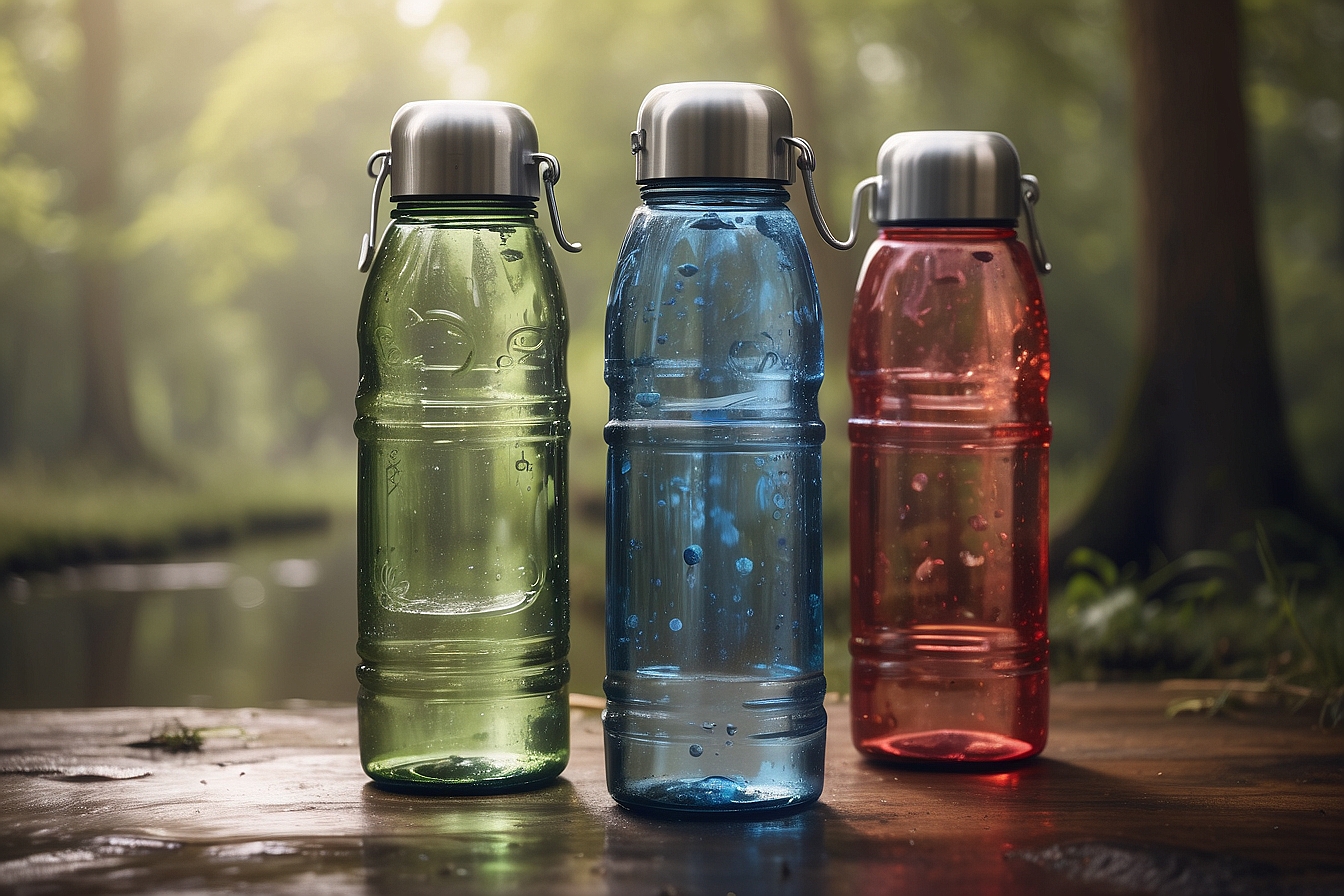The Centers for Disease Control and Prevention (CDC) has called water fluoridation one of the top 10 public health achievements of the 20th century.1 Yet, as historian Donald R. McNeil states, “A few things remain constant in America – death, taxes, baseball and, since the 1950s, widespread, often successful efforts by a passionate minority to keep fluoride out of drinking water.”2 Why is the issue of fluoride in public water supply so controversial?
What is Fluoride?


Fluorite CrystalsiFluorides are the naturally occurring element fluorine bonded with another substance, usually a metal. They are absorbed into the bloodstream from the digestive tract. Once in the bloodstream, fluorides travel to areas with high levels of calcium, such as teeth.3 Fluoride protects teeth from cavities because it binds to the tooth enamel. Tooth enamel is composed of hydroxylapatite, a crystal that contains calcium, phosphorus, hydrogen, and oxygen. By replacing the hydroxyl molecule in this crystal, fluoride makes the tooth more resistant to acid corrosion from bacteria.4
Fluorides occur naturally in soil, air, and water. In its purest form, fluorine is a highly reactive gas, which is why it so readily forms compounds. Types of fluorides can be found scattered throughout our lives. Hydrofluoric acid is used to make glass for light bulbs, while calcium fluoride is used to make lenses that focus infrared light.5
History of Fluoride
There are two phases in the history of fluoride: 1) natural water fluoridation, and 2) artificial water fluoridation. Most water is naturally fluoridated. The average fluoridation of water found in oceans is 1.3 ppm while the average fluoridation of freshwater ranges from 0.1 to 0.3 ppm.6 The natural fluoridation of water derives from the fact that fluoride exists abundantly in the Earth’s crust, from which it then leaches into sources. Studies have found that the soil at the base of mountains is likely to be high in fluoride due to weathering and leaching of the mountain’s fluoride-rich bedrock.7
Dr. Frederick McKay in Colorado, USA and Dr. J.M. Eager in Naples, Italy discovered the phenomenon of naturally fluoridated water almost simultaneously between 1901 and 1902. McKay noticed that something in certain areas’ water supplies was staining teeth, but that the rates of tooth decay in those areas were lower than that of adjacent areas. Several years later in 1925, Dr. Norman Ainsworth noticed dental staining as well; he called the staining “Rocky Mountain Mottled Teeth.” Ainsworth conducted a study in the United Kingdom where he examined over 4,000 children’s teeth and concluded that those living in areas with “mottled” teeth tended to have less decay than those that did not have mottled teeth. However, no one knew yet what in the water source was causing this phenomenon.8
In 1931, H.V. Churchill, a chemist for the Aluminum Company of America (ALCOA), decided to look into this connection. ALCOA was concerned that it was aluminum in the water that was causing the staining. When Churchill analyzed the chemical components of water sources from areas with staining, he found that high levels of fluoride were the common factor. Ainsworth copied this study in the United Kingdom and confirmed Churchill’s conclusions.9
During World War II, the United States Public Health Service chose Dr. H.T. Dean to conduct a study further investigating the relationship between fluoride and tooth decay. Dean conducted the “21-City Study,” which showed that teeth mottling rarely occurred at 1 ppm or below and that the fluoride’s preventative effects could be seen at 1 ppm. The U.S. Public Health Service decided to therefore try to add fluoride to water supplies with low natural fluoride levels to see if they could decrease the occurrence of tooth decay. They started first with Grand Rapids, Michigan in January 1945. Six years later, they compared the teeth of six-year-olds in Grand Rapids (meaning these children had grown up with the artificially fluoridated water) to the teeth of children from Muskegon, a neighboring town with low levels of natural fluoridation. The results showed that decay levels in Grand Rapids were almost half of those in Muskegon. From there, the trend took off. Today, approximately 40 countries have artificially fluoridated water sources.10
Controversy over Artificial Fluoridation
Since the 1940s, the issue of artificial water fluoridation has been revisited again and again. The most obvious negative health impact of fluoride exposure is dental fluorosis, which is cause of the “Rocky Mountain Mottled Teeth” Ainsworth referred to in the 1920s. In a mild case, dental fluorosis causes white streaks on the teeth; in a severe case, there can be brown stains, pits, and broken enamel on the teeth. According to a 2010 study from the Centers for Disease Control and Prevention, approximately 41% of youth ages 12 to 15 had some form of dental fluorosis.11
Other than fluorosis, some studies have linked even low-level fluoride use to a host of health issues, such as bone fractures, thyroid disorders, and impaired brain development. Some believe that artificial fluoridation is an unethical form of mass medication, where individuals are not giving consent or may not even realize that their public water supply contains fluoride. This argument has gained traction with the discovery that fluoride mostly works topically, meaning if an individual wants to use fluoride, they can purchase one of the many fluoride-containing toothpastes instead of drinking fluoride-containing water.12
In other areas of the world, groundwater conditions can cause fluoride concentrations to be as high as 35 ppm. Since concentrations slightly above 1 ppm are not considered to be safe, a concentration of 35 ppm is very toxic to humans. Countries that have reported fluoride concentrations of 25 ppm and above include India, Kenya, and South Africa. UNICEF has recently pioneered defluoridation plans in these areas in order to improve the public health of these populations.13
Then you hear talk of Americans having much better teeth than many other peoples in the world. Many accept that this is the result of water fluorination. So on the other side of the fluoride backlash is that fact that many still maintain that a low-level fluoride concentration (1 ppm) in drinking water is safe and effective. Currently, the U.S. Environmental Protection Agency has even set the maximum concentration of fluoride at 4 ppm and 2 ppm for children under the age of nine. To make the issue more confusing still, there are studies that contradict the results that low-level fluoride use is linked to the very same diseases mentioned earlier.14
The American Dental Association estimated that in 2013, 72.5% of Americans lived in areas with fluoridated drinking water.15 As cities continue to revisit this the subject on the ballot box, time will tell if this percentage will increase or decrease. To find out more about your water’s fluoride levels, contact your public water utility. In the United States, you may also want to refer to the CDC Oral Health resources page for more information.





